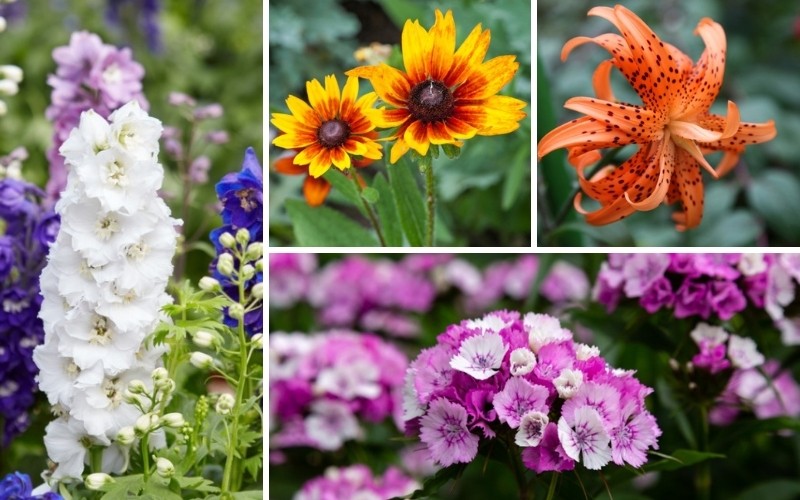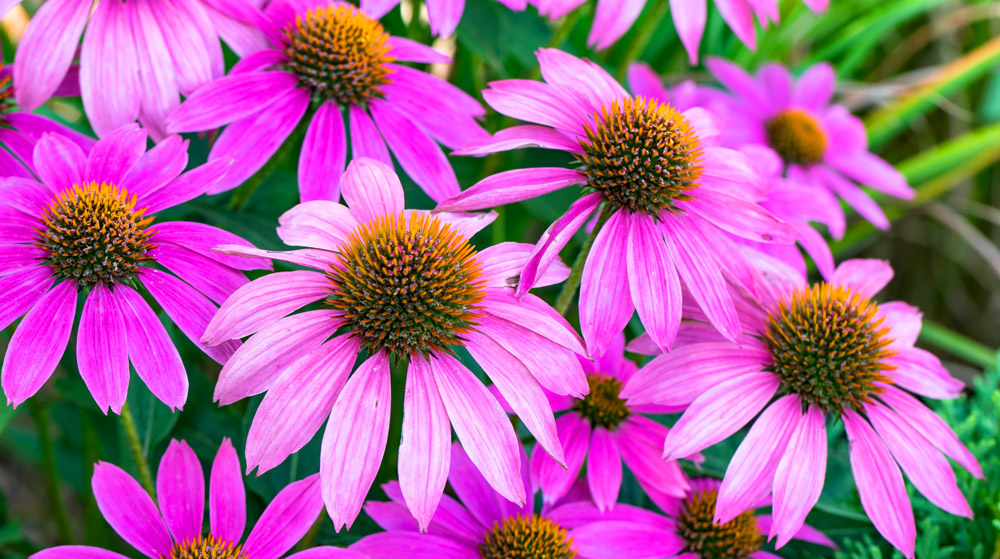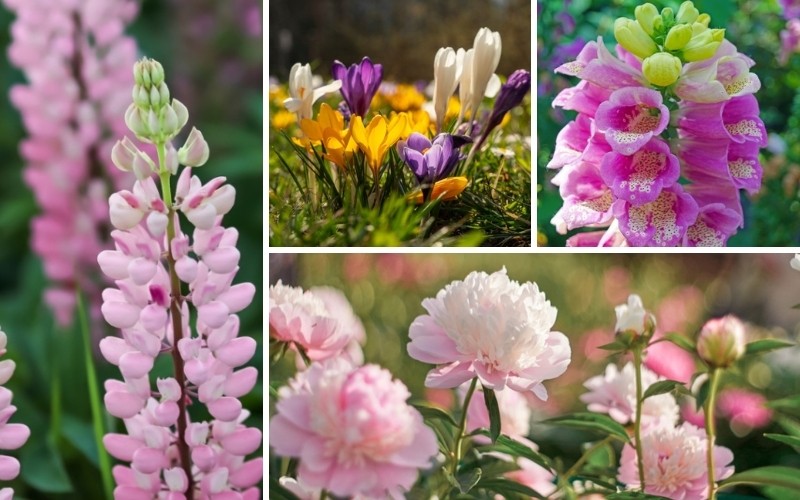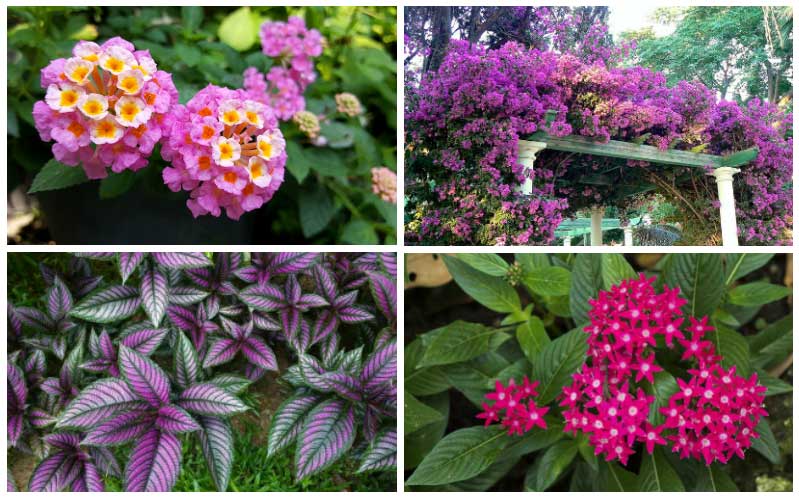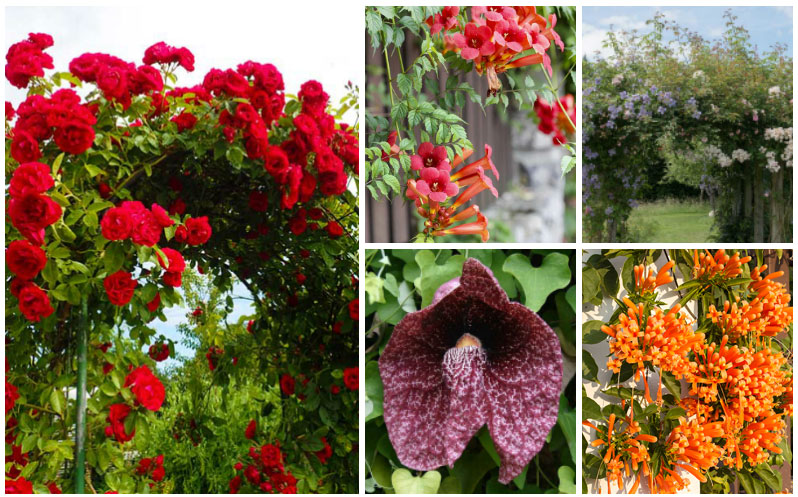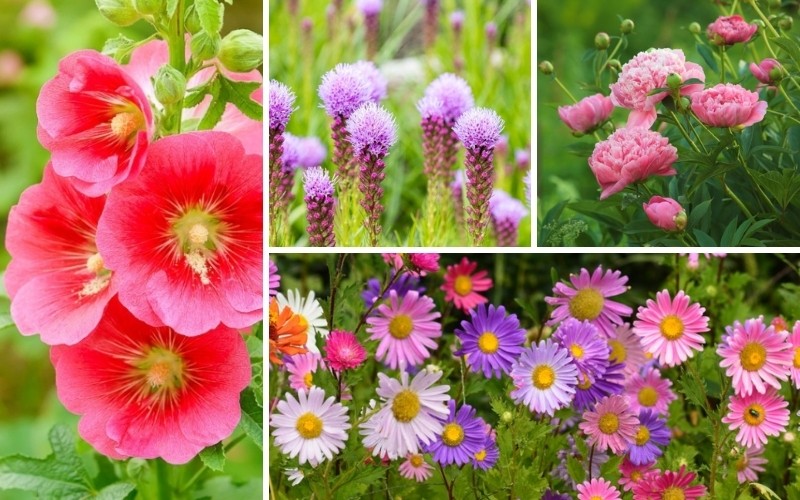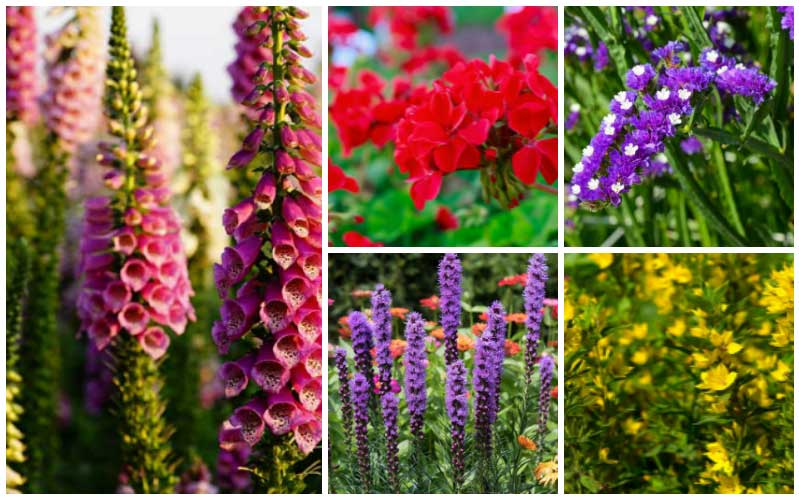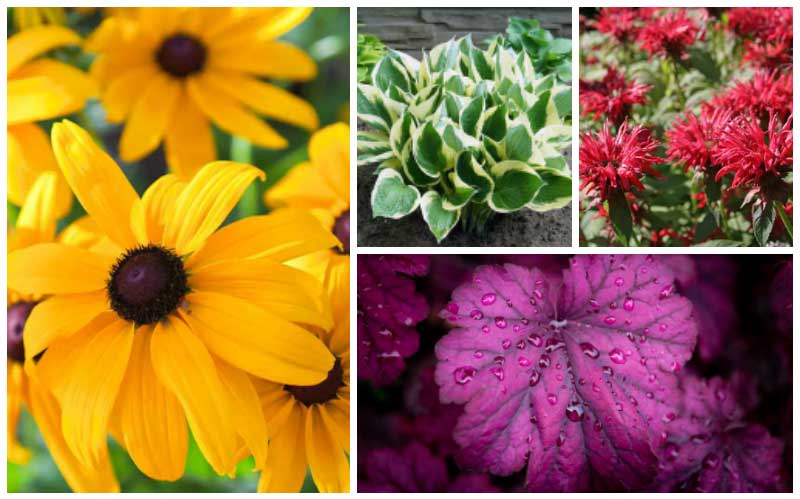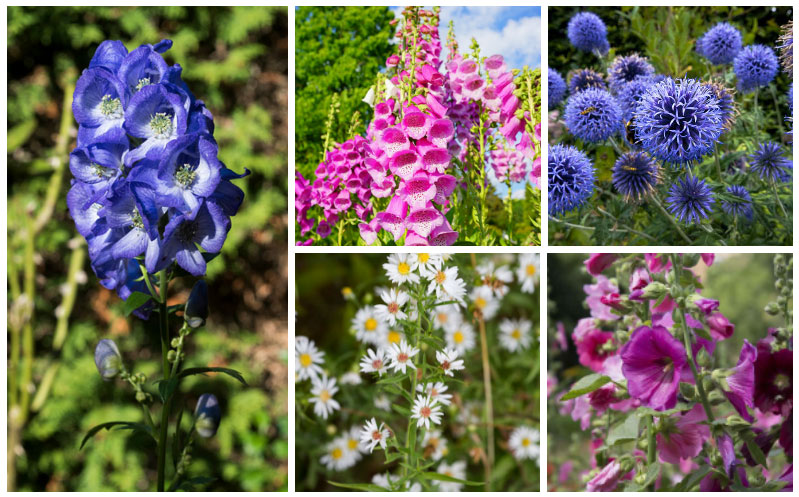
When you lay out your garden, remember to create a flower-scape with perennials of varying height to create a truly stunning effect that will amplify the beauty of every plant in the garden. Flowers that stand a few feet in height are treasured by gardeners, especially those desiring the ambiance of a cottage garden or a wildflower garden.
Create a beautiful garden backdrop or add a splash of color to a yard fence with these 17 tall-growing perennials that are sure to make a big impact.
Boltonia
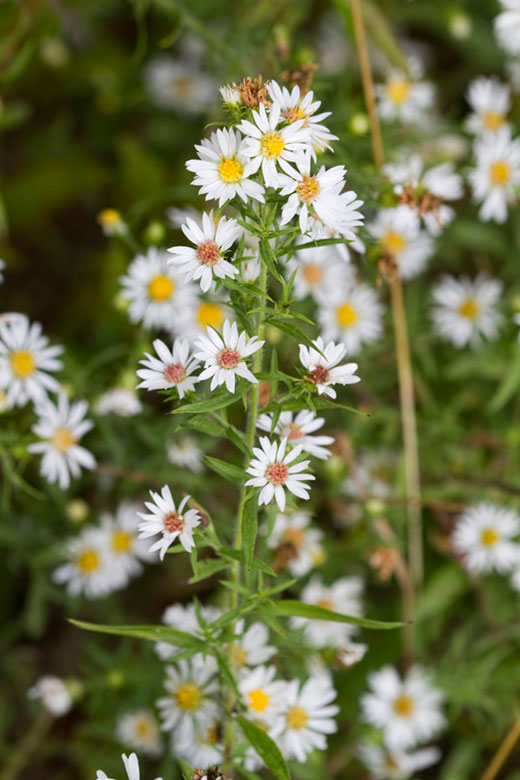
Commonly called false chamomile, these flowers grow 5-6’ and have tiny, daisy-like blooms that have a yellow center. They are native to prairies, meadows and stream banks. Boltonia is commonly used as a backdrop for border gardens. These dazzling little flowers bloom in late summer to early fall and prefer full sun, growing best in zones 3-10.
Bugbanes
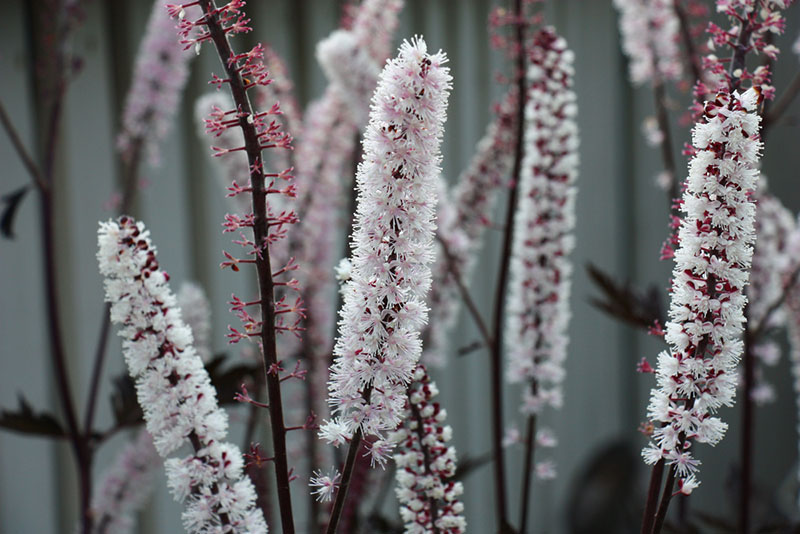
Known as the “Hillside Black Beauty,” this plant is known for a delicate array of small, creamy white blooms that appear in late summer. This highly fragrant flower is commonly added to woodland gardens and is well-liked because of its foliage that has a colored tint ranging from bronze to deep purple. Bugbane requires partial or full shade to reach their potential height of 3-4’ and grow well in zones 4-8.
Chimney Bellflower
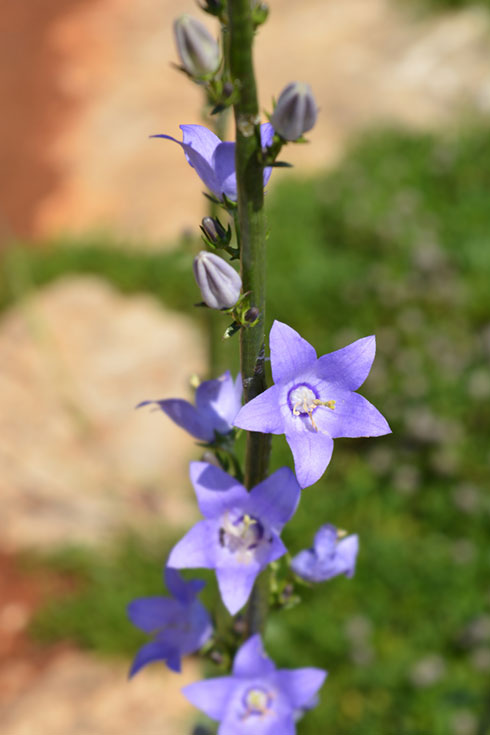
The bellflower is a species of the Campanula, meaning “bell-like.” It got its name because of the bell-shaped purple blooms that grow in a chimney-shaped stalk that rises from rich-green foliage. They grow up to 5’ in height and grow best in zones 4-8.
Common Foxglove
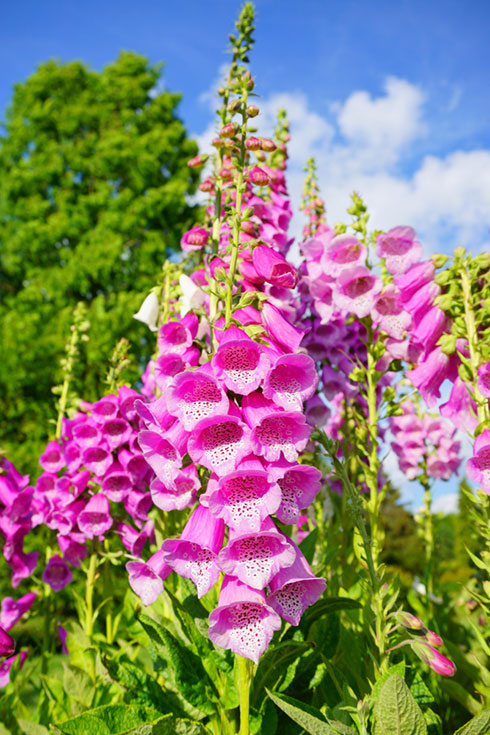
This exceptional flower has a central spire that produces rosettes of funnel-shaped leaves that vary in color, typically a shade of rose or violet. The tall spires and rich color make them striking enhancements to any garden wall or next to a shrub. Common foxglove grows anywhere from 2-5’ and blooms in mid-summer in zones 4-8.
Rose mallow
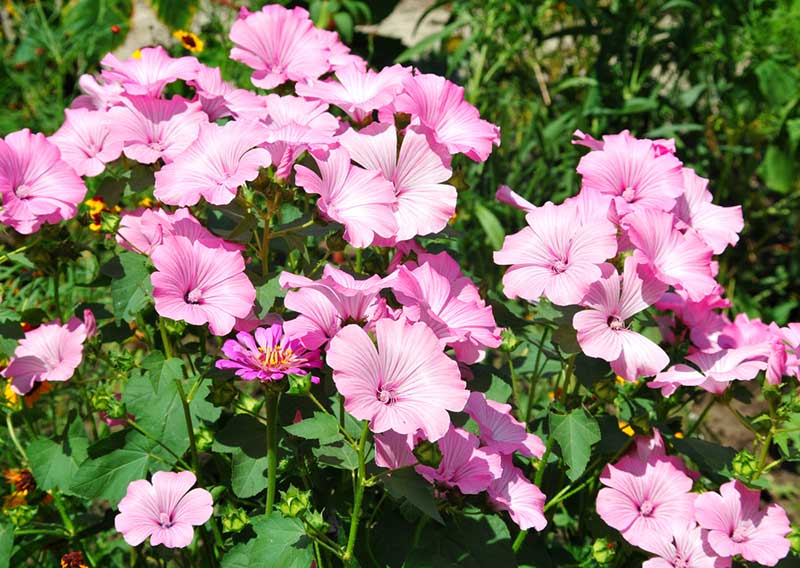
This flower is nicknamed “Everest White” for its striking, disc-shaped flower with five pure white petals and a central eye that is purple to rose-colored. Flowers bloom from a distinguished central column of green foliage. Rose mallow is prized by gardeners for its angelic white color and its ability to attract butterflies in summer months. Each semi-tropical flower has the ability to produce more than 200 individual blooms, thriving when grown in zones 5-9.
Sneezeweed
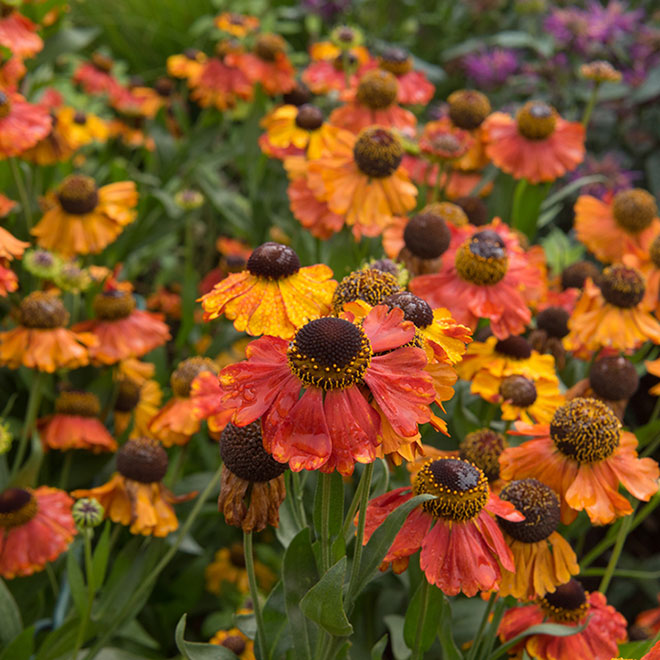
This 2-5’ flowering plant has numerous flowering heads with daisy-like petals that are wedge-shaped and end in three delicate teeth. The flower’s eye is dark yellow or amber in color and shaped like a protruding ball. The plant gets its unique name for its early use of making a type of snuff that would be inhaled to trigger sneezing, believing that the sneezing would rid the body of bad spirits. Sneezeweed blooms generally grow from three to five feet and will grow best in zones 3-8.
Desert Candles
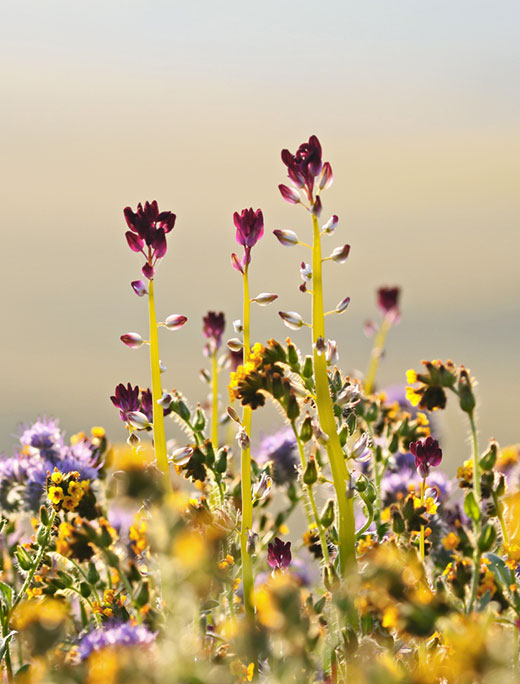
These flowers show in cylindrical stalks with blooms growing in a tail-like cluster above a flowerless spire, resembling a giant candle. Desert candles grow best in zones 5-8 and should be planted in an area that protects them from strong winds due to their stalk-like shape. Desert candle looks best as a background flower or by a shrub and has a warm fragrance that spreads easily in the air.
Elecampane
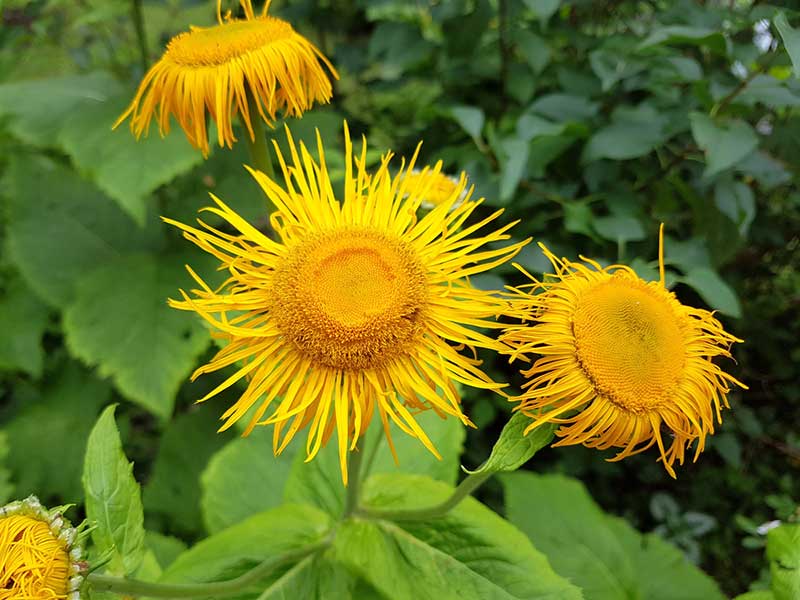
Also called elfdock or horse-heal, Elecampane is technically an herb that can be used for lung-based medicinal purposes such as asthma, bronchitis and the common cough due to its ability to loosen phlegm. The showy, sunflower-style flowers are perfect for wildflower gardens, herb gardens, and cottage gardens. Growing anywhere from 3-6’ in height, these low-maintenance herbs can be grown in most zones, preferring zones 3-7.
Globe Thistles
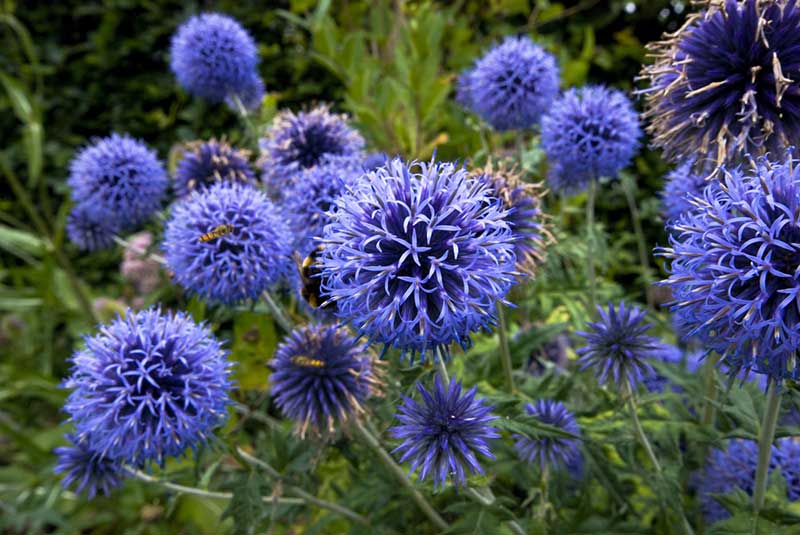
The globe-shaped blooms of this exceptional flower contain a bundle of thistle petals that come together to form a whimsical flower that has a radiant ambiance. The flower’s genus name comes from the Greek word meaning hedgehog, referring to the thistles of the grayish-blue blooms. Globe thistles generally grow from 2-4’ and thrive when grown in zones 3-8.
Hollyhock
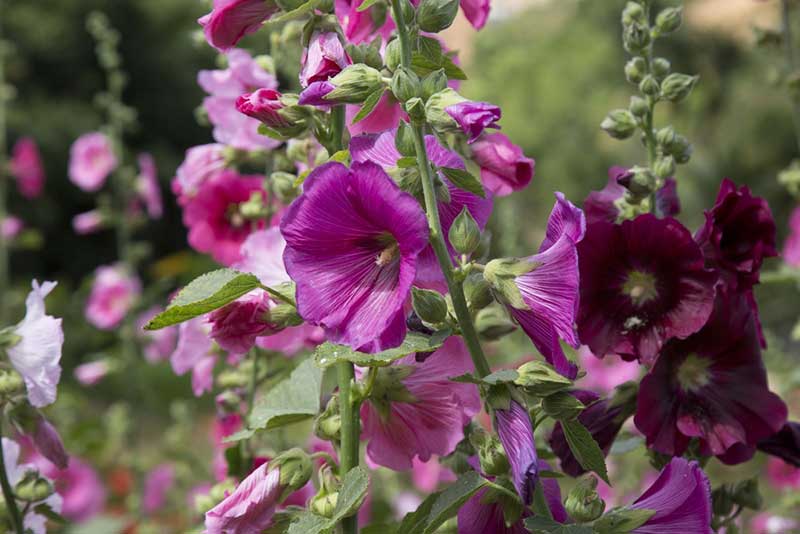
These flowers are a favorite for their old-world charm and cottage elegance. Hollyhocks have tall, delicate, heart-shaped blooms that come in varying shades of pinks, reds, whites, and a pale yellow. Hollyhock is a prized flower because of its growth height of 5-8’ and its reputation for attracting hummingbirds and butterflies. Hollyhock is a hearty plant that grows well in zones 2-10, yet requires a good deal of maintenance to achieve the desired blooms.
Joe-pye weed
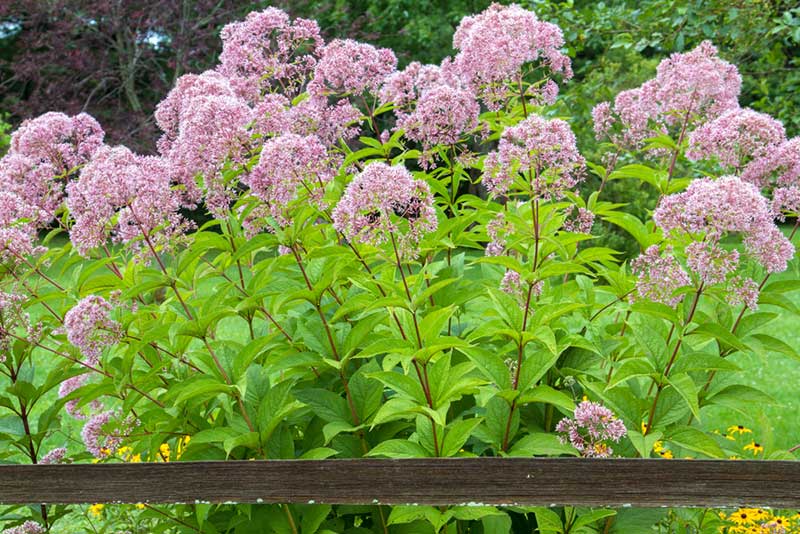
A native of Missouri, Joe-pye weed grows anywhere from four to seven feet in height, containing 5-7 florets of tiny, pinkish-purple blossoms that produce an enticing vanilla scent. This is a low-maintenance plant that attracts butterflies and grows nicely in zone 4-9.
Meadow rues
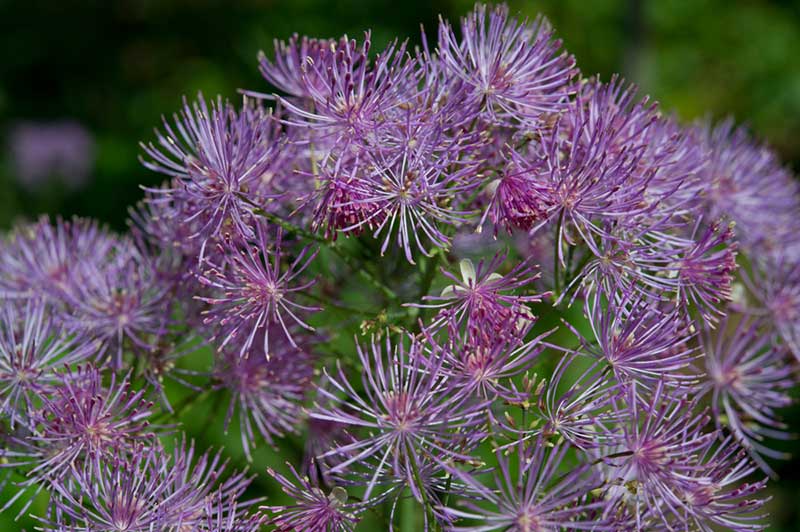
Also called lavender mist, this flower has lavender-purple blossoms that offer a spectacular garden backdrop when grown in a cluster. Meadow rue stands between 4-6’ and should be shown within zones 4-7.
Monkshoods
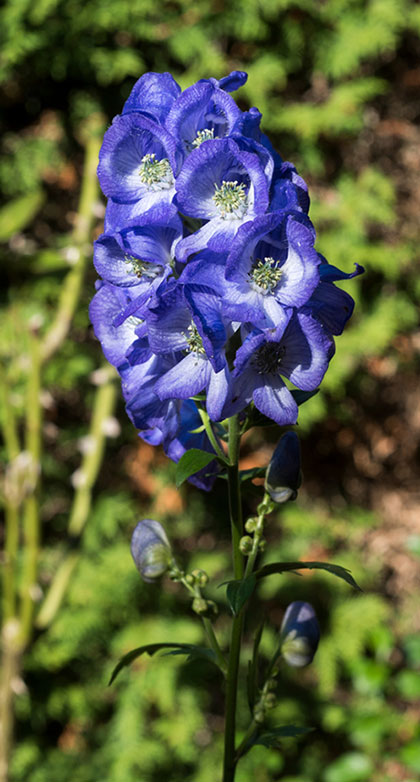
This showy flower has hooded, purplish-blue flowers that grow 2-4’ tall. Every part of monkshood is highly poisonous, making it not favorable to plant in an area where young children or pets play. Monkshood grows best in zones 3-7.
Plume poppy
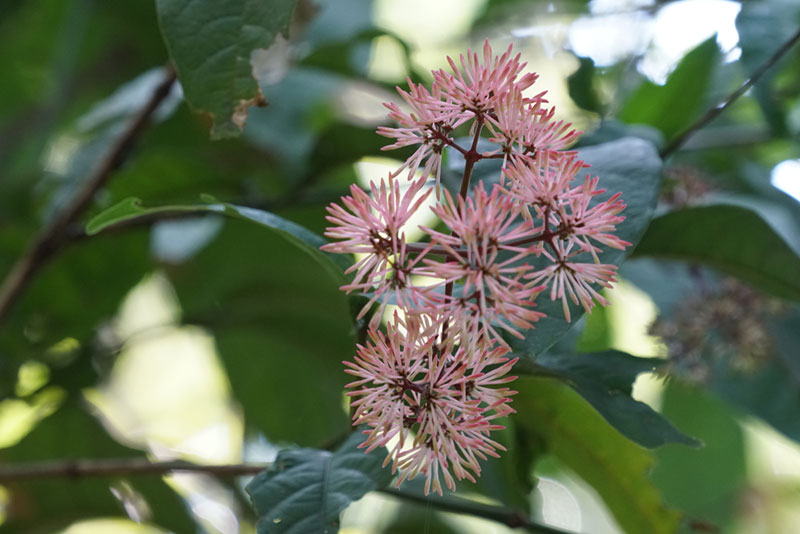
This Asian native is known for its large, scalloped foliage and dainty, creamy-white flowers that each contain more than 20 stamens. Plume poppies make excellent garden backdrops and grow well alongside fences or border walls, reaching 5-8’ in height. Plume poppies will have the best growth in gardens within zones 3-8.
Valerian
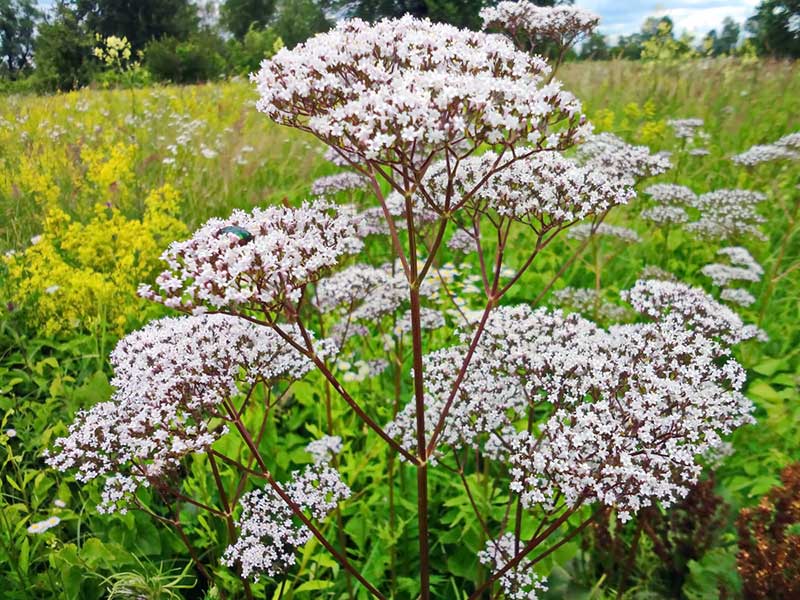
This prized herb is highly popular for the medicinal purposes of its root and has been used in bedtime tea to aid in helping to promote a good night’s sleep since the time of ancient Greece. The flower itself is a halo of dainty, lacy white blossoms, similar to baby’s breath. Valerian is very tolerant of cold weather and can stand up to 5’ in height during full-bloom, growing best in zones 4-9.
Wild senna
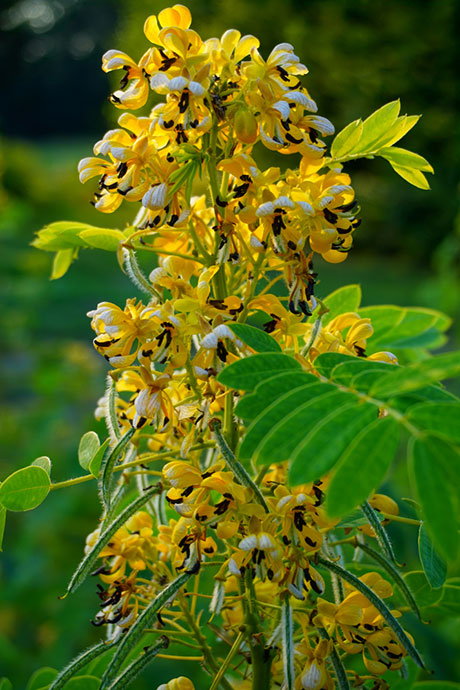
The complex blooms wild senna flowers have 5-10 leaflets on each bloom, typically falling downward toward the ground with a few remaining pointed upward. Wild senna will grow and bloom best in zones 4-8.





